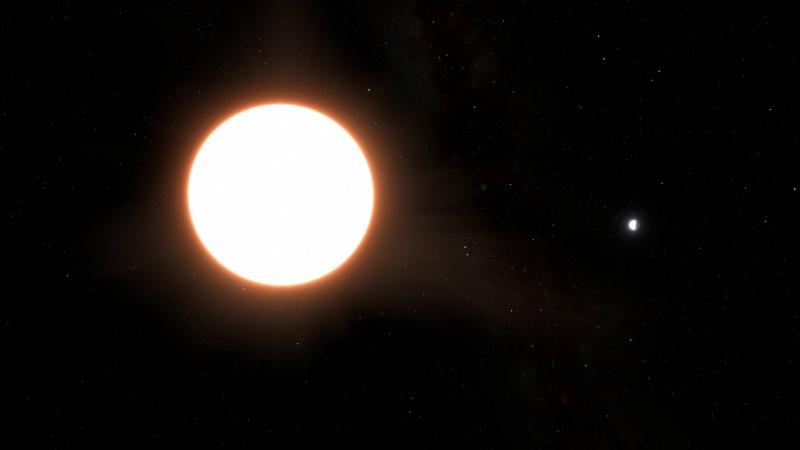Researchers have reported the observation of a strange exoplanet, extremely hot and slightly larger than Neptune, orbiting a sun-like star every 19 hours. It appears to be surrounded by metallic clouds that reflect most of the incoming light back into space.
James Jenkins, an astronomer at Diego Portales University in Chile and co-author of the research published in the journal "Astronomy and Astrophysics," stated, "It is a giant mirror in space." He added that this planet reflects about 80% of the light it receives, making it one of the most reflective objects known in the universe. Venus, the brightest object in the sky besides the moon, is the most capable of reflecting light in the solar system, covered in toxic sulfuric acid clouds. Venus reflects about 75% of the light it receives, while Earth reflects only about 30%.
The planet is named "LTT9779b" and, along with its star, is located in the Milky Way galaxy approximately 264 light-years away from Earth. A light-year is the distance light travels in a year, equal to 9.5 trillion kilometers. The planet's diameter is 4.7 times that of Earth and it orbits very close to its star, closer than Mercury is to the Sun, and 60 times closer than Earth's orbit. Under the solar radiation emitted by its star, its surface temperature is about 1800 degrees Celsius, hotter than molten lava.
The researchers were amazed to find that the planet has an atmosphere, given its proximity to its star, leading them to believe that its surrounding clouds are metallic, comprising a mixture of titanium and silicates, which make up most of Earth's crust. An atmosphere containing water clouds, like Earth's, would have long since dissipated due to solar radiation. Jenkins noted, "We even believe that the clouds could condense into droplets, resulting in titanium rain in parts of the atmosphere."
The researchers studied the planet using the Cheops space telescope, operated by the European Space Agency. Sergio Hoyer, an astronomer and the main author of the study from the Marseille Astrophysics Laboratory in France, indicated that "no other planet like this has been discovered so far."
There appears to be a tidal relationship between this planet and its star, similar to the relationship between the Moon and Earth, with one side always facing the star and the other side in perpetual darkness.
All known planets orbiting their stars in less than a day have either been gas giants similar in composition to Jupiter, the largest planet in the solar system, but hotter due to solar radiation, or rocky planets smaller than Earth and lacking an atmosphere. Researchers are curious whether LTT9779b, classified as a "hot Neptune," may have originally formed as a gas giant that later lost most of its atmosphere or if it began at its current size.
Scientists have discovered over 5,000 exoplanets, known as "extrasolar planets," many of which have entirely different attributes than the eight planets constituting the solar system.




